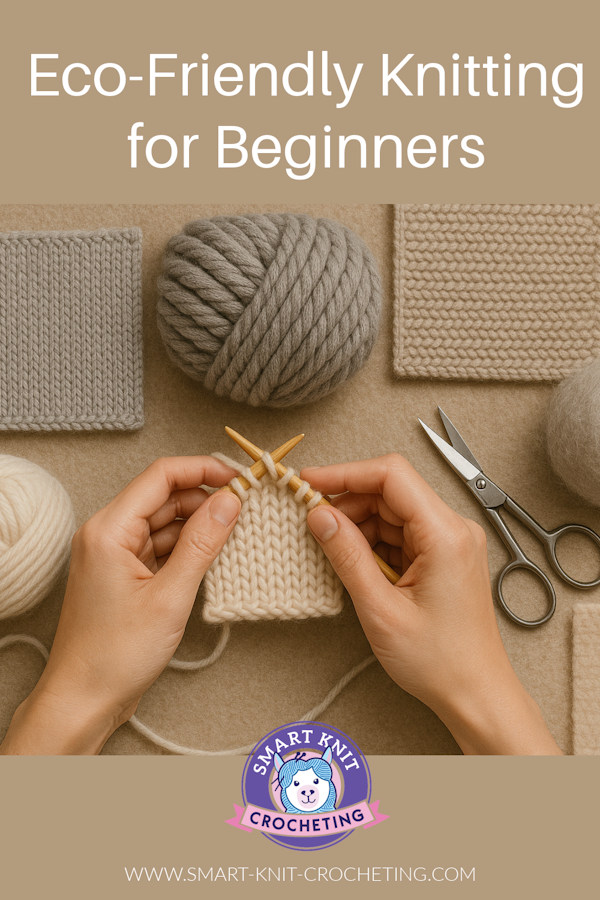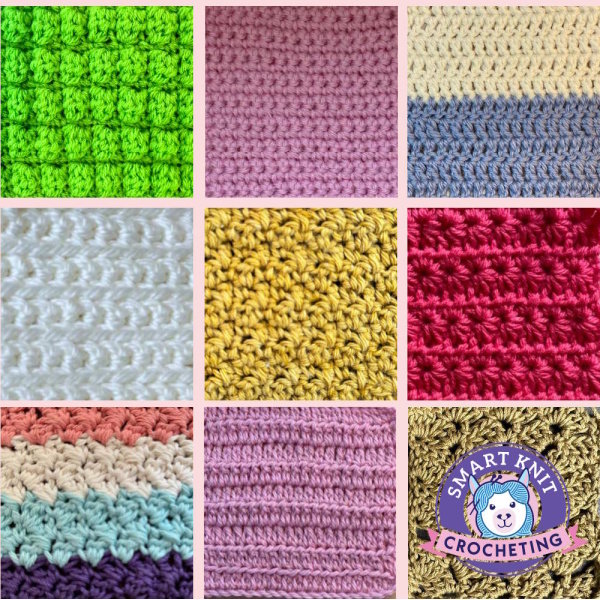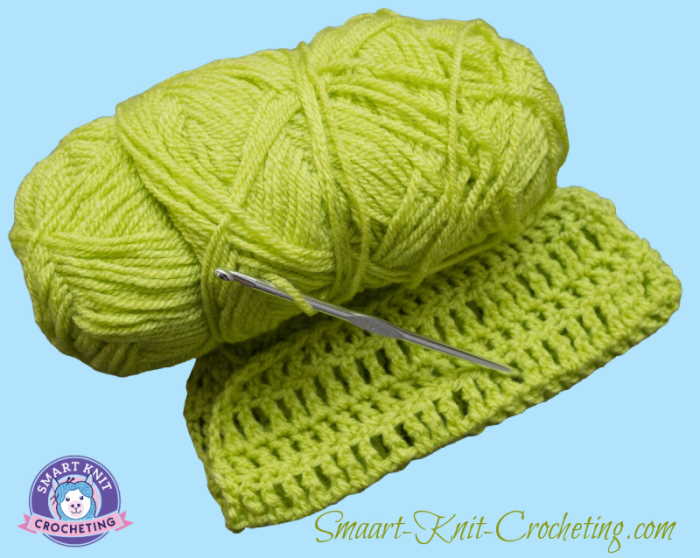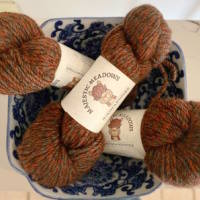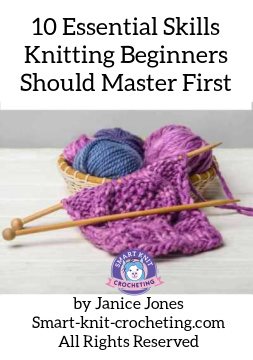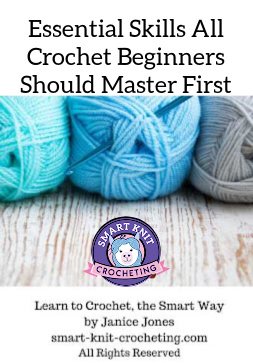- Home
- Eco-Friendly Knitting
Eco-Friendly Knitting for Beginners: A 2025 Guide
Why Eco-Friendly Knitting Matters?
As the world embraces sustainability, knitting has found its place in the movement. More crafters are asking: How can I knit responsibly?
I may not be a tree-hugger, but I do worry about our world and what we are doing to it. I try to reduce our waste, conserve energy and water, use sustainable materials, and lower greenhouse gas emissions.
The keyword here is try, as I don't always succeed.
With my knitting and crochet hobby, it is essential to me to choose yarns and tools carefully. It might be easy to purchase a skein of acrylic yarn because it is cheaper, but it's not always the best choice.
I want to share with you what I learned after researching eco-friendly knitting (and crocheting) so we can all become mindful of how our hobbies impact our environment.
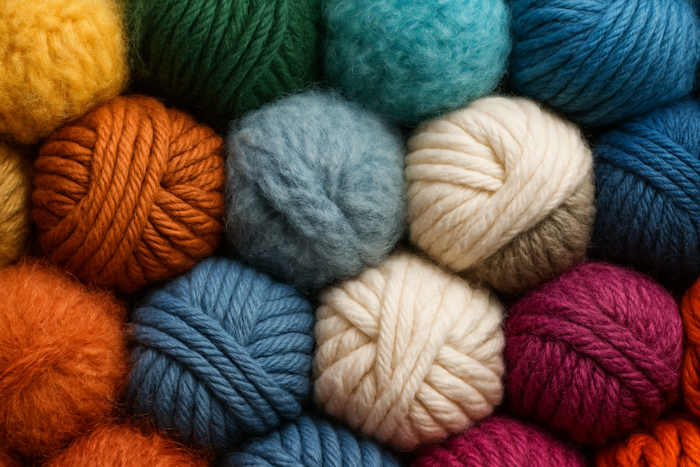 Eco-Friendly Knitting for Beginners
Eco-Friendly Knitting for BeginnersEco-friendly knitting blends creativity with conscious choices, aligning perfectly with the Grandmacore aesthetic and the slow living crafts movement.
By choosing sustainable yarns, reducing waste, and making mindful projects, every stitch becomes a small act of care for both the planet and ourselves.
What Makes Knitting Eco-Friendly?
Eco-friendly knitting goes beyond the finished product—it’s about how and what we choose to create.
- Natural Fibers Over Synthetics: Plant-based yarns like cotton, hemp, and bamboo decompose naturally.
- Mindful Project Planning: Choosing timeless, wearable projects that we love and will wear for years to come reduces wasted effort and resources.
- Upcycling & Reuse: Repurpose old yarn, unravel past projects, and transform them into something new and exciting. This may involve visiting your local thrift stores regularly.
Best Eco-Friendly Yarns to Try in 2025
If you’re new to sustainable knitting, start with yarn choices:
- Alpaca (organic & undyed) – soft, long-lasting, and biodegradable.
- Linen (flax) – breathable, plant-based, and durable.
- Tencel/Lyocell – made from sustainably harvested wood pulp.
- Natural Dye Options – discuss low-impact dyes, plant dyeing, and avoiding toxic chemicals.
- Vegan yarns – a subsection for readers avoiding wool (corn fiber, soy, banana silk).
What Yarn Companies Are Doing to Make Their Yarn Eco-Friendly
Many yarn companies are becoming increasingly aware of their environmental impact and are taking steps to change their practices to better align with eco-friendly standards.
- Using Certified Organic Fibers: Many brands are switching to GOTS-certified organic cotton or wool sourced from farms that avoid the use of pesticides, herbicides, and synthetic fertilizers. Organic farming practices help protect soil health and water quality, while ensuring animals are treated humanely.
- Focusing on Animal Welfare: Wool producers are adopting mulesing-free practices (important for merino sheep). Some companies highlight pasture-raised, small-farm wool, where sheep and alpacas live in sustainable, low-stress environments.
- Recycled Yarns: Recycled wool, acrylic, and even denim are becoming more common. Companies shred leftover textiles or post-consumer garments, then spin them into new yarns—diverting waste from landfills.
- Plant-Based Alternatives: Beyond cotton, yarn makers are offering yarns made from hemp, linen, bamboo, and banana fibers, which are renewable and biodegradable. Some brands experiment with Tencel (Lyocell), made from sustainably harvested wood pulp.
- Natural & Low-Impact Dyes: Eco-conscious yarn dyers use plant-based dyes or low-impact synthetic dyes that require less water and produce less toxic runoff. Some indie dyers market “undyed yarns,” letting the natural fiber colors shine.
- Sustainable Packaging: Reducing or eliminating plastic wraps. Shipping yarn in compostable bags, paper ties, or recyclable cardboard tubes. Many ask you, the consumer, if you want your purchase shipped in plastic bags. Your answer should be no, of course.
- Carbon Footprint Reduction: Some larger companies publish sustainability reports that track their carbon emissions. Local mills and small yarn farms reduce transportation impact by keeping production and sales regional. A good reason to buy locally.
- Transparency & Certifications: Labels like OEKO-TEX certify yarns free from harmful chemicals. Fair Trade certifications support workers and communities.
Many companies now list sourcing details right on their websites, building trust with eco-conscious knitters.
Sustainable Yarn Brands & Their Eco-Friendly Lines
Not all yarn brands offer eco-friendly yarn, but many do, at least to some extent. If you are genuinely concerned, here are a few companies that are making efforts to help us live sustainably.
I receive a small commission from yarns at no cost to you purchased at Amazon through the links on this page.
1. Blue Sky Fibers
Blue Sky Fibers offers a couple of lines of eco-friendly yarns that you can purchase from your local yarn store or from online resources. You can locate both on their website.
Organic Cotton line, made with GOTS-certified organic cotton, is ideal for lightweight and breathable knits like baby blankets and summer wear. They offer their organic cotton line in both worsted-weight and skinny.
Woolstok is a soft, structured wool that combines comfort with the natural appeal of a fiber. It is crafted from Peruvian Highland sheep and features excellent stitch definition. It appears to be a worsted-weight yarn.
2. BC Garn
Danish brand offering various GOTS-certified organic yarns like Semilla GOTS, Bio Shetland GOTS, and Loch Lomond GOTS. Organic and accessible. Wool & Company offers several eco-friendly yarns from BC Garn Company. Hobbii is another online retailer that offers BC Gran yarns. It's always a good idea to check your local yarn shop for specific products.
3. Lion Brand – Sustainable Stitching™
The Sustainable Stitching collection utilizes recycled fibers and renewable materials at affordable prices, blending eco-awareness with accessibility.
Their Wool-Ease Recycled yarn is composed of 80% recycled acrylic and 20% recycled wool, offering a familiar feel with a lower impact. It is also economical and can be purchased on Amazon.
4. Knit Picks
Knit Picks offers a range of recycled, naturally colored, GOTS-certified organic, and OEKO-TEX-certified yarns in its eco-friendly lineup, providing knitters with numerous sustainable options in one place. You can purchase yarns directly from their website or if you prefer, Amazon offers many of the wool, superwash wools, and cottons.
5. Hoooked
Hoooked founded as an eco-conscious alternative, now based in Portugal, Hoooked specializes in yarns made from 100% recycled textile waste—notably RibbonXL, which is OEKO-TEX® Standard 100 Class II certified and free from harmful substances. You will also find many of their yarns on Amazon. Their t-shirts and Zpagetti yarns are particularly popular among crocheters.
Yes, I had to recheck myself, but their name is correctly spelled.
6. Darn Good Yarn
Based in New York, Darn Good Yarn offers recycled silk blends, plant-based fibers such as hemp and linen, banana silk, and upcycled materials. They also emphasize ethical sourcing, fair wages, and safe working conditions. You can purchase their yarns directly from their website or on Amazon. You can also buy many different eco-friendly yarns from Michigan Fine Yarns online.
7. Echoview Fiber Mill
The Ranger Merino yarn comes from the first Gold-LEED-certified fiber mill in the U.S., sourcing wool from nearby farms to minimize environmental impact and ensure energy-efficient production.
Why Not All Cotton Is Eco-Friendly
Just because a yarn is “natural” doesn’t automatically make it eco-friendly. Here are the main reasons why not all cotton or 100% wool yarns qualify as sustainable:
- High Water Consumption: Conventional cotton is one of the thirstiest crops. It can take 2,700 liters of water to produce enough cotton for a single t-shirt. This places stress on water-scarce regions.
- Pesticides and Chemicals: Non-organic cotton farming often relies heavily on pesticides, herbicides, and fertilizers that harm soil health, waterways, and biodiversity. Cotton also requires bleaching and chemical treatments in processing.
- Labor Concerns: A significant amount of cotton is grown in regions where workers may not receive fair wages or work under unsafe conditions. Eco-friendly yarn brands address this by choosing Fair Trade or GOTS-certified cotton.
Why Not All Wool Is Eco-Friendly
- Animal Welfare Issues: In some countries, sheep may undergo mulesing (a painful procedure to reduce flystrike) or be raised in poor welfare conditions. Mulesing is a cruel surgical procedure in which sections of skin with wool are cut away from around a sheep's tail and breech. Ethical wool brands ensure sheep are treated humanely, often labeling their yarn mulesing-free. If you are on Amazon, look for brands like Katia, Scheepjes, and DROPS.
- Land and Methane Impact: Large-scale sheep farming can contribute to overgrazing, soil erosion, and methane emissions (a potent greenhouse gas). Small, regenerative farms often mitigate these issues by rotating grazing pastures and employing holistic land management practices.
- Chemical Processing: Wool is often treated with harsh chemicals (bleach, mothproofing, superwash resins) that create pollution and prevent the fiber from fully biodegrading. Eco-friendly options focus on minimally processed or organic wool.
What to Look For Instead
You may need to visit the yarn brand website for information. Not all resellers will provide this information. Remember that natural does not always equal sustainable.
- Cotton: Organic, GOTS-certified, Fair Trade, or recycled cotton.
- Wool: Organic wool, mulesing-free labels, Responsible Wool Standard (RWS) certification, or yarns from local/regional small farms.
Eco-Friendly Tools and Supplies
We often forget about the tools and supplies we use and focus more on the type of yarn. If we want to be eco-friendly, we should also examine a few other items:
- Bamboo or wooden needles vs. plastic/aluminum.
- Reusable project bags: Opt for reusable bags over plastic ziplock bags.
- Digital patterns vs. printed (or if printing, use recycled paper).
- Solar-powered lights or lamp options for night knitting.
Eco-Friendly Knitting Projects for Beginners
Sustainable projects don’t need to be complex. Try:
- Small Projects: Reusable dishcloths, scrubbies, or market bags.
- Medium Projects: Eco-friendly blankets, sweaters from recycled fibers, or multipurpose wraps.
- Gift Ideas: Handcrafted items with practical use, such as reusable bags or cozy socks.
Care and Longevity of Eco-Knits
If our goal is to produce garments meant to last, we also need to think about the following:
- How to wash wool sustainably (cold water, wool wash, air dry).
- Repairing garments (darning, patching) instead of tossing them.
- Storing knits properly to extend their life.
Tips for a Sustainable Knitting Practice
- Buy Less, Choose Better: Invest in high-quality, eco-friendly yarns that last.
- Buy just what you need: Purchase yarn in the amount you need for specific projects. Buying yarn because you love the look or feel, without any idea of what you will use it for, may result in it never being used. (I confess, I'm guilty of this one.)
- Repurpose Scraps: Use leftover yarn for small accessories, trims, or patchwork projects, or as filling for stuffed dolls and animals.
- Support Local: Buying yarn from small farms and makers reduces carbon footprint and supports communities.
The Connection Between Knitting and Slow Living
Knitting is more than a hobby; it’s a mindful practice. Each stitch embodies patience and presence. By embracing eco-friendly knitting, you not only craft beautiful items but also connect with the values of slow living crafts and the sustainable crafting movement.
Eco-Friendly Knitting FAQ
Is eco-friendly yarn more expensive?
Is eco-friendly yarn more expensive?
Not always. While some organic or hand-dyed yarns may cost more, affordable options such as organic cotton, hemp blends, or recycled fibers are widely available. Over time, high-quality, sustainable yarns often last longer, making them a cost-effective choice.
Can synthetic yarns ever be eco-friendly?
Can synthetic yarns ever be eco-friendly?
Yes—when they are made from recycled materials. For example, recycled acrylic or polyester blends reduce landfill waste and give plastics a second life. However, they won’t biodegrade like natural fibers.
How do I know if a yarn is truly sustainable?
How do I know if a yarn is truly sustainable?
Look for certifications such as GOTS (Global Organic Textile Standard), OEKO-TEX, or Fair Trade. These labels ensure that the yarn is produced with a lower environmental impact and adheres to ethical practices.
What’s the best yarn for eco-friendly beginners?
What’s the best yarn for eco-friendly beginners?
Organic cotton is often the easiest to start with—it’s soft, biodegradable, and widely available. Hemp and bamboo are also great beginner-friendly choices because they are strong, breathable, and work well for simple projects like dishcloths or tote bags.
What are some easy zero-waste knitting projects?
What are some easy zero-waste knitting projects?
Great beginner projects include dishcloths, market bags, and scrubbies. These small, functional projects help reduce single-use plastics and can be made from yarn scraps.
How can I reduce waste with leftover yarn?
How can I reduce waste with leftover yarn?
Try joining small scraps together to create patchwork blankets, granny-square-style knits, or colorful accessories. You can also use scraps for edging, pompoms, or stuffing small toys.
Does eco-friendly knitting really make a difference?
Does eco-friendly knitting really make a difference?
Yes—every choice adds up. Choosing biodegradable fibers, repurposing old projects, or supporting ethical yarn makers reduces waste and encourages sustainable practices within the crafting community.
10 Easy Ways to Make Your Knitting More Sustainable
- Choose Organic or Certified Yarns: Look for labels such as GOTS, OEKO-TEX, or RWS to ensure the fibers are produced responsibly.
- Support Local Yarn Shops & Small Farms: Reduces shipping emissions and supports community economies.
- Use Recycled or Upcycled Fibers: Try yarn made from recycled wool, denim, or even textile waste.
- Repurpose Scraps: Save leftover yarn for pompoms, trims, scrubbies, or patchwork projects.
- Unravel & Reuse Old Projects: Frogging (unraveling) sweaters or swatches gives yarn a second life.
- Choose Eco-Friendly Tools: Opt for bamboo, wood, or metal needles instead of plastic ones.
- Pick Timeless Projects: Knit items you’ll actually use or wear over and over again. Fewer throwaway knits means less waste.
- Avoid Overbuying: Plan projects and purchase only the amount of yarn you need. If your stash becomes too large, consider selling, donating, or using what you have before buying more.
- Care for Your Knits: Hand-wash or use cold water, and air-dry to extend the life of handmade items.
- Share & Swap: Join yarn swaps, donate unused skeins, or gift sustainable knits to friends.
Eco-Friendly Knitting: Pin for Future Reference
Conclusion: Start Small, Knit Big
Eco-friendly knitting doesn’t demand perfection, but rather it invites intention. Begin by choosing one sustainable yarn or trying a single eco-friendly project. Over time, your craft will not only warm hands and homes but also nurture the planet.
